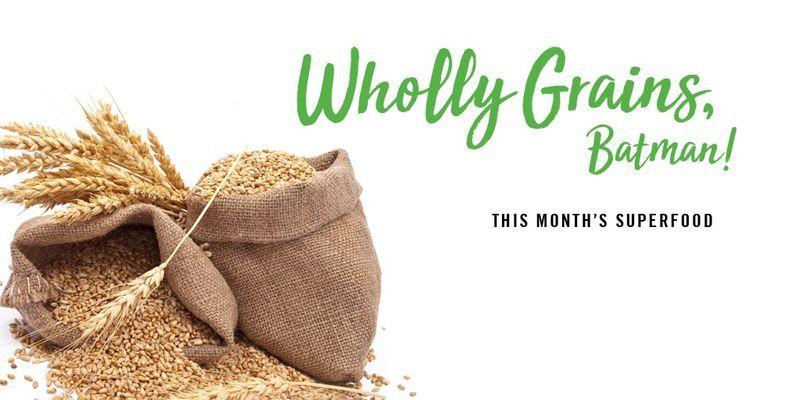Did you know the backbone of human nutrition is based on a family of tiny kernels? This month’s superfood is a small but mighty one that has powered people across the globe for hundreds of thousands of years (and, it gave us popcorn).
A whole grain is the seed harvested from a grass, like corn, rice or wheat. To wear the title of a whole grain, it must have all three parts of the kernel: the bran, a fiber-filled outer layer; the endosperm, a protein and vitamin-loaded middle layer; and the germ, a nutrient-packed core.
From flour to popcorn, there are many ways to enjoy whole grains. You could start the day with a bowl of steel-cut oatmeal, eat a midday sandwich with whole grain sprouted bread or whip up a dish of quinoa and veggies for dinner. And don’t forget about popcorn — the perfect snack both inside and outside of the movie theater — as long as you go easy on the butter and salt.
Whole grains pop up across campus in a variety of places, too. Be sure to ask for whole wheat buns at Bishop Craft Burgers, or whole wheat bread at Poly Deli and Subway. You can even pick up Poly Fresh overnight oats from many dining venues’ refrigerated sections.
They might seem itty-bitty, but whole grains are packed with plenty of nutrients your body needs. Eating whole grains can lower the risk of diabetes, heart disease and high blood pressure. They also support healthy digestion, and are great sources of fiber and protein.
Whole grains are more nutritious than their counterparts — the also-popular refined grains — which lose valuable nutrients in their refining process. Some white rices and white breads are examples of these grains.
For a healthy switch, choose whole grains over refined. When making a pizza, grab a whole grain bagel or pita bread as the base. When cooking up pasta, use brown rice or whole wheat noodles. If you’re looking for whole grain foods in the grocery store, simply check items for a certified Whole Grain Stamp.
There are many ways to add whole grains to the meals you love. Try replacing one-third of flour with quick oats in a baking recipe, or stirring a handful of rolled oats into a cup of fresh yogurt.
The American Heart Association recommends eating six to eight servings of grain foods per day, so hop on the whole grain train as often as you can.
People have eaten whole grains for more than 17,000 years. Before they discovered the art of popping popcorn or milling flour, they boiled kernels in water, or chewed them raw. Luckily, we’ve discovered many more delicious ways to enjoy them today.
Whole grains appear on people’s dining table all over the world. Wheat, for example, is the staple food for 35 percent of the world’s population, providing more calories and protein in the world’s diet than any other crop.
Humans have relied on grains not only to support their own bodies, but their buildings too. The Great Wall of China was built using a mortar mixed with sticky rice, which has helped many other notable structures stand tall for thousands of years.

